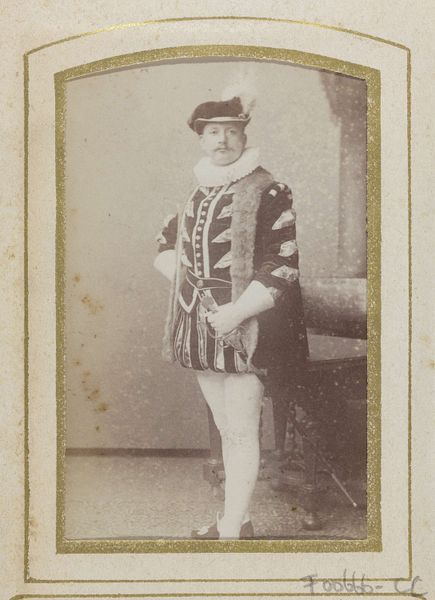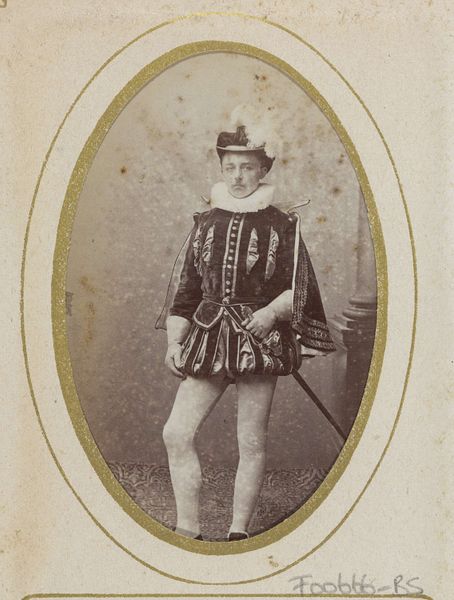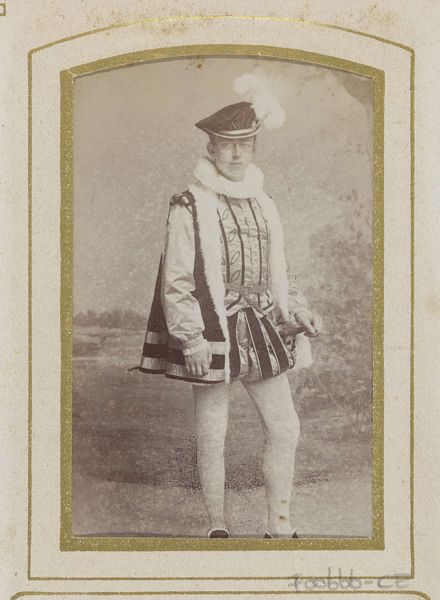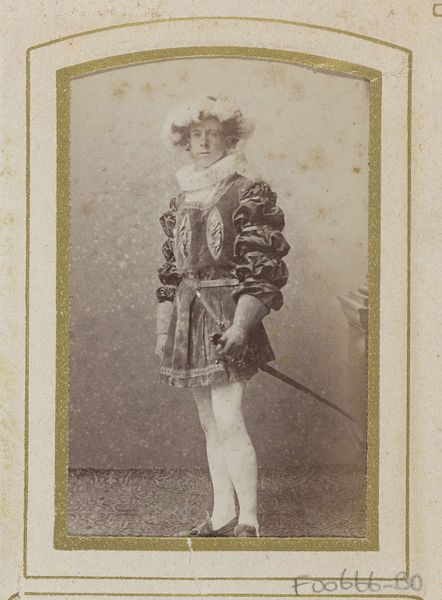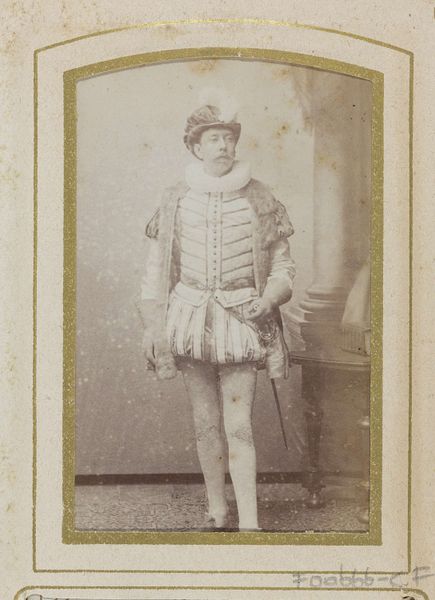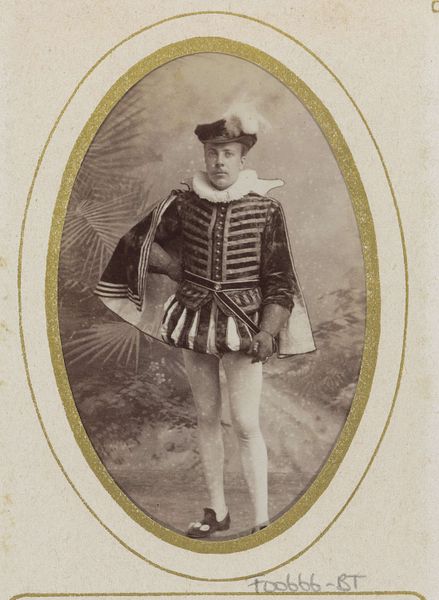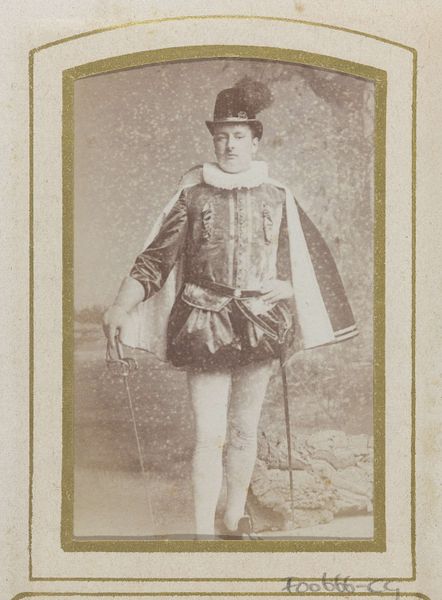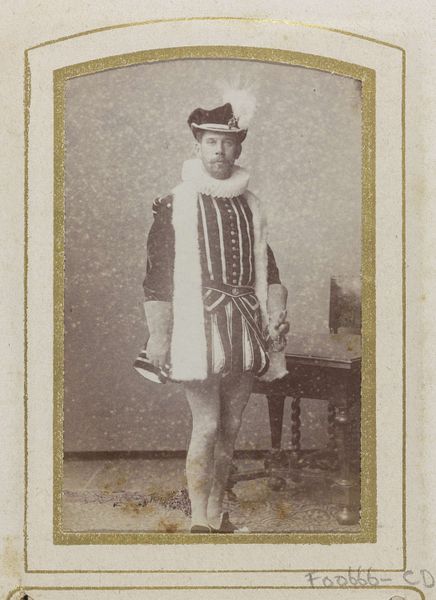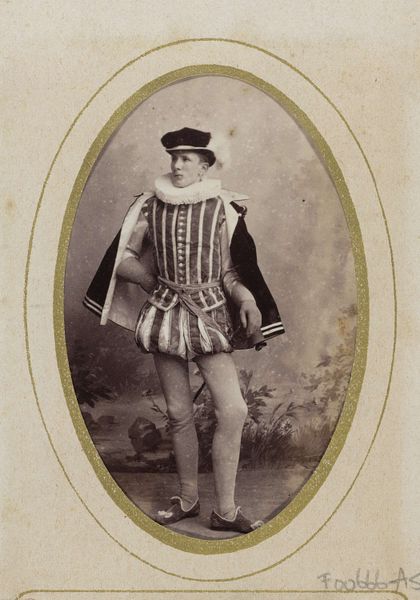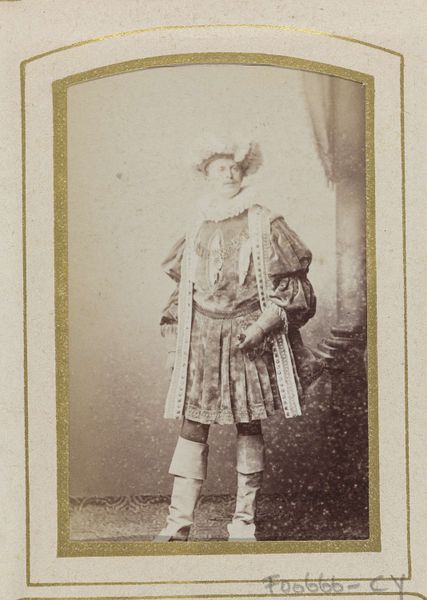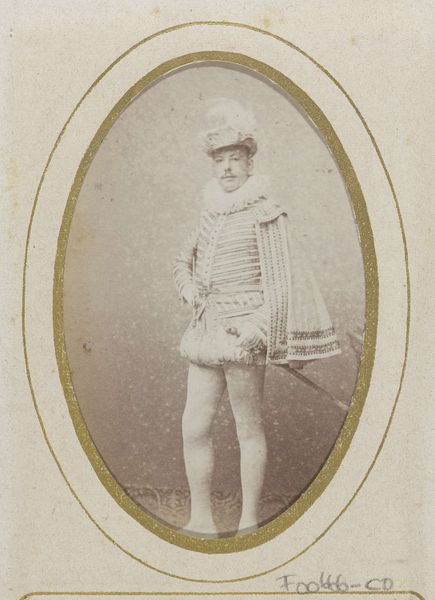
Portret van een jonge man in kostuum met degen, aangeduid als J.A.E. Rhede van der Kloot 1860 - 1905
0:00
0:00
photography, albumen-print
#
portrait
#
photography
#
19th century
#
genre-painting
#
albumen-print
Dimensions: height 83 mm, width 52 mm
Copyright: Rijks Museum: Open Domain
Editor: This albumen print, "Portret van een jonge man in kostuum met degen, aangeduid als J.A.E. Rhede van der Kloot," by Jan Goedeljee, likely created between 1860 and 1905, features a man in elaborate period costume. It’s intriguing how photography, still a relatively new medium, engages with historical portraiture. What do you see in this image, especially concerning its relationship to artistic and material production? Curator: Well, consider albumen prints, how each one reflects a confluence of industrial chemistry, skilled labor, and bourgeois desires for representation. This isn't simply capturing a likeness. It’s about projecting social standing, made possible by advances in photographic technology and distribution. Notice the stage-like setting—a painted backdrop—combined with the real materiality of his clothing, the lace ruff, the velvet of his sleeves. How might that intersection inform our reading? Editor: It strikes me that the costume, which would have been very expensive to create, clashes with the relative accessibility that photography was starting to offer. Is this perhaps a performance of exclusivity in an era of expanding access to visual media? Curator: Precisely. Think about the consumption patterns it reveals. The individual’s clothing, manufactured and adorned, signals one type of value, whilst the photographic process suggests the rise of reproducibility and standardization, influencing who got represented and how. Also, do you notice the framing? The gold leaf... How does that influence your interpretation? Editor: Yes! The gold trim on the photograph suggests an effort to elevate it beyond a simple snapshot. Perhaps referencing painting traditions or precious objects. It complicates the relationship between "high art" and this new form. This collision of eras, old and new, is starting to suggest complex consumption, class, and representation. Curator: Absolutely, the combination of material signifiers – the costume, the photograph itself, and its framing– allows us to examine emerging economic and social hierarchies and question our assumptions of art as pure aesthetic expression, shifting our gaze towards the structures of production.
Comments
No comments
Be the first to comment and join the conversation on the ultimate creative platform.
